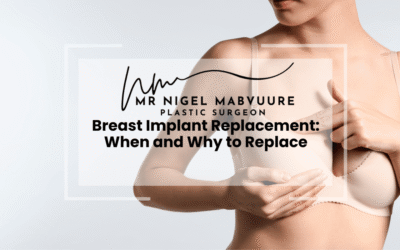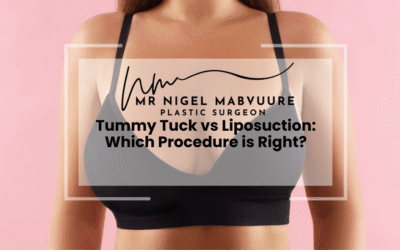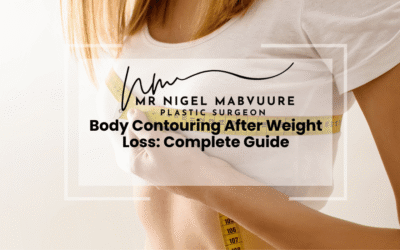Essential Insights for a Successful Arm Lift Recovery
- Full arm lift recovery typically spans 6-12 months, with most patients returning to light activities within 1-2 weeks and seeing final results around 6 months post-surgery.
- Effective pain management combines prescribed medications, proper arm elevation, cold therapy, and gentle movement as approved by your surgeon.
- Proper post-operative care includes meticulous incision care, consistent compression garment use, and nutrition rich in protein and vitamins to support healing.
- Exercise resumption follows a graduated timeline: walking immediately, lower body exercises at 3-4 weeks, light arm movements at 4-6 weeks, and full workouts at 8-12 weeks post-surgery.
- Monitor for complications like infection (increased redness, warmth, fever), seroma (fluid collection), or delayed healing, contacting your surgeon promptly if warning signs appear.
- Arm lift results develop progressively—initial improvements appear as swelling subsides in the first month, with continued refinement through months 3-6 and scar maturation continuing up to 18 months.
Table of Contents
- Understanding the Arm Lift Recovery Timeline: What to Expect
- Managing Pain and Discomfort After Brachioplasty Surgery
- Post-Operative Care: Essential Tips for Optimal Healing
- When Can I Return to Normal Activities After an Arm Lift?
- Preventing and Addressing Potential Arm Lift Complications
- Tracking Your Progress: How Arm Lift Results Develop Over Time
- How Long Until I Can Exercise After Brachioplasty?
Understanding the Arm Lift Recovery Timeline: What to Expect
Arm lift recovery follows a predictable timeline, though individual experiences may vary based on personal factors such as age, overall health, and the extent of the procedure. Understanding this timeline can help you prepare mentally and physically for your brachioplasty healing journey.
The initial 24-48 hours after surgery are typically the most challenging. During this period, you’ll experience swelling, bruising, and discomfort as the anaesthesia wears off. Your arms will be bandaged, and drainage tubes may be in place to prevent fluid accumulation. It’s essential to have someone assist you during this time, as your mobility will be significantly restricted.
By the end of the first week, your surgeon will likely remove any drains and change your bandages. The acute pain should begin to subside, though swelling and bruising will remain prominent. Most patients can manage discomfort with prescribed pain medication during this phase of arm lift recovery.
Weeks 2-3 mark a turning point in your brachioplasty healing. Bruising typically begins to fade, though swelling may persist. Many patients feel comfortable enough to return to light activities and desk-based work, though you’ll still need to avoid lifting your arms above shoulder level or carrying anything heavier than a mobile phone.
By weeks 4-6, most patients experience significant improvement in comfort and mobility. Your surgeon may clear you for moderate activities, though strenuous exercise and heavy lifting remain restricted. The visible results of your arm lift will begin to emerge as swelling continues to subside.
Managing Pain and Discomfort After Brachioplasty Surgery
Pain management is a crucial aspect of brachioplasty healing. Most patients describe arm lift recovery pain as moderate rather than severe, typically peaking during the first 48-72 hours before gradually subsiding. Understanding effective pain management strategies can significantly improve your recovery experience.
Your surgeon will prescribe appropriate pain medication tailored to your specific needs. It’s important to take these medications as directed rather than waiting until discomfort becomes severe. Establishing a regular schedule for pain medication during the first few days helps maintain consistent comfort levels. As recovery progresses, most patients can transition to over-the-counter analgesics like paracetamol.
Beyond medication, several non-pharmaceutical approaches can help manage discomfort during arm lift recovery. Cold therapy using ice packs (wrapped in a thin towel to protect the skin) can reduce swelling and numb the area when applied for 15-20 minutes several times daily. However, avoid direct ice contact with the incision sites.
Proper positioning also plays a vital role in minimising discomfort. Sleeping with your arms elevated on pillows helps reduce swelling and pressure on the surgical sites. Many patients find that a recliner chair provides the most comfortable sleeping arrangement during the first week of recovery.
Gentle movement, as approved by your surgeon, can also help manage discomfort by promoting circulation and preventing stiffness. Simple finger and wrist exercises can be started early in recovery, gradually progressing to gentle elbow movements as comfort allows. However, it’s crucial to follow your surgeon’s specific instructions regarding movement limitations to avoid compromising your results.
Post-Operative Care: Essential Tips for Optimal Healing
Proper post-operative care is fundamental to successful brachioplasty healing and achieving optimal arm lift results. Following your surgeon’s specific instructions is paramount, but several universal care principles apply to most arm lift recovery journeys.
Incision care requires particular attention. Keep the surgical sites clean and dry according to your surgeon’s instructions. You’ll typically need to avoid full immersion in water (baths, swimming pools, hot tubs) for at least 2-3 weeks. When showering becomes permitted, gently pat the incision areas dry rather than rubbing. Apply any prescribed ointments exactly as directed, and avoid applying lotions, creams, or other products to the incision sites unless specifically approved by your surgeon.
Compression garments play a crucial role in arm lift recovery. These specially designed sleeves help control swelling, support the healing tissues, and help shape your arms as they heal. Your surgeon will provide specific guidance on how long to wear these garments, but most patients need them continuously (except when bathing) for 4-6 weeks. While compression garments may feel uncomfortable initially, they significantly improve comfort as you adjust to wearing them.
Nutrition and hydration deserve special attention during brachioplasty healing. Protein-rich foods support tissue repair, while fruits and vegetables provide essential vitamins and minerals that facilitate healing. Staying well-hydrated helps flush anaesthesia from your system and supports overall recovery. Conversely, it’s advisable to limit sodium intake, as excessive salt can exacerbate swelling.
Rest is equally important, but complete inactivity isn’t recommended. Light walking helps prevent blood clots and promotes circulation to healing tissues. Finding the right balance between rest and gentle movement, as guided by your surgeon, optimises your recovery trajectory and helps prevent complications.
When Can I Return to Normal Activities After an Arm Lift?
Returning to normal activities after brachioplasty follows a graduated timeline that balances your body’s healing needs with your desire to resume your regular routine. Understanding these milestones can help you plan your recovery period appropriately and set realistic expectations.
Most patients can return to desk-based work and light daily activities within 7-14 days after surgery. However, jobs requiring physical exertion, heavy lifting, or extensive arm movements typically require 3-4 weeks off. When planning your return to work after arm lift surgery, consider arranging modified duties if your job involves significant physical demands.
Driving is generally permitted once you’ve stopped taking prescription pain medication and can comfortably perform emergency manoeuvres, typically around 1-2 weeks post-surgery. However, the exact timing varies based on your recovery progress and comfort level. Before attempting to drive, ensure you can turn the steering wheel and react quickly without pain or restriction.
Social activities can gradually resume as comfort allows, though you may wish to avoid crowded venues during the early recovery period to prevent accidental bumps to your healing arms. Many patients feel comfortable attending social gatherings after 2-3 weeks, though you may still need to be mindful of arm movements and wear loose-fitting clothing that doesn’t irritate the incision areas.
Household chores should be approached cautiously during arm lift recovery. Light activities like meal preparation can usually resume within a week, but tasks requiring reaching, stretching, or lifting (such as vacuuming, changing bed linens, or carrying shopping bags) should be avoided for at least 4-6 weeks. Arranging help with household responsibilities during this period can significantly reduce recovery stress.
Preventing and Addressing Potential Arm Lift Complications
While arm lift complications are relatively uncommon when performed by qualified plastic surgeons, understanding potential issues and their prevention is an important aspect of recovery preparation. Being vigilant about warning signs allows for prompt intervention if complications arise.
Infection prevention is paramount during brachioplasty healing. Follow all wound care instructions meticulously, including hand washing before touching the surgical area and taking prescribed antibiotics completely as directed. Warning signs of infection include increased redness, warmth, tenderness, pus-like drainage, or fever above 38°C. Contact your surgeon immediately if these symptoms develop, as early intervention can prevent more serious complications.
Seroma (fluid collection) and haematoma (blood collection) can occasionally occur after arm lift surgery. Proper use of compression garments helps prevent these complications, as does following activity restrictions. Signs of seroma or haematoma include sudden swelling, pain, or a feeling of fluid movement under the skin. Your surgeon may need to drain accumulated fluid if these conditions develop.
Wound healing complications can affect arm lift results if not addressed promptly. Factors that impair healing include smoking (which should be avoided completely before and after surgery), poor nutrition, and certain medical conditions like diabetes. Incision separation or delayed healing requires medical attention to prevent infection and minimise scarring.
Nerve-related symptoms such as numbness, tingling, or heightened sensitivity are common during recovery and typically resolve gradually over several months. However, persistent or worsening nerve symptoms should be reported to your surgeon. Similarly, while some asymmetry is normal during healing, significant or persistent unevenness between arms should be evaluated during follow-up appointments.
Tracking Your Progress: How Arm Lift Results Develop Over Time
Arm lift results emerge gradually as your body heals, with the full transformation becoming apparent over several months. Understanding this progression helps manage expectations and appreciate the evolving improvements during your recovery journey.
The initial post-surgical appearance can be disconcerting for some patients, as swelling, bruising, and bandages obscure the true results. During the first month, as acute swelling subsides, you’ll begin to notice the improved contour of your arms, though they may still appear somewhat swollen compared to their final shape. The incision lines will appear red or pink and may be raised during this early phase.
By months 2-3, most patients experience significant improvement in comfort and appearance. The majority of swelling resolves during this period, revealing more defined arm contours. Scars remain visible but begin to flatten and fade from red to pink. Many patients feel comfortable wearing short-sleeved clothing by this stage, though complete scar maturation takes longer.
Between months 3-6, arm lift results continue to refine as residual swelling dissipates completely. The skin and tissues adapt to their new position, and arm contours appear more natural. Sensation typically returns to normal during this period, though some areas may experience prolonged numbness that gradually resolves.
The final arm lift results generally stabilise around 6-12 months post-surgery. By this time, scars have typically faded significantly, though they remain permanent. They continue to improve in appearance for up to 18 months, gradually becoming thinner and lighter. Many patients find that scars are easily concealed or inconspicuous enough that they don’t limit clothing choices.
Documenting your healing journey with photos (taken at the same angle and lighting) can help you appreciate the progressive improvements that might otherwise be difficult to notice day-to-day. These visual records often provide reassurance during the recovery process and allow you to track your transformation objectively.
How Long Until I Can Exercise After Brachioplasty?
Returning to exercise after arm lift surgery requires a carefully phased approach to protect your results while maintaining overall fitness. Following your surgeon’s specific timeline is essential, as individual recovery rates vary based on the extent of surgery and personal healing factors.
Walking is encouraged from the day after surgery to promote circulation and prevent blood clots. Begin with short, gentle walks around your home, gradually increasing duration as comfort allows. Most patients can resume normal walking routines by 2-3 weeks post-surgery, making this an excellent low-impact activity during early recovery.
Lower body exercises that don’t engage the arms or chest can typically resume around 3-4 weeks after brachioplasty, provided your surgeon approves. This might include modified leg exercises, stationary cycling with an upright posture (avoiding leaning on handlebars), or carefully performed lower body weight machines that don’t require arm support or stabilisation.
Light arm movements generally become permissible around 4-6 weeks post-surgery. This might include gentle range-of-motion exercises and very light resistance training with 1-2 pound weights. The focus during this phase should be on regaining mobility rather than building strength. Avoid exercises that place tension on the incision lines or cause discomfort.
Full exercise routines, including more vigorous arm workouts, typically resume between 8-12 weeks after surgery. Even at this stage, it’s advisable to progress gradually, starting with moderate weights and repetitions before advancing to more challenging workouts. Listen to your body and avoid exercises that cause pain or unusual sensations in the surgical areas.
Swimming deserves special consideration after brachioplasty. While water immersion must be avoided until incisions are fully healed (typically 3-4 weeks), swimming itself requires longer restrictions due to the extensive arm movements involved. Most surgeons recommend waiting 8-12 weeks before resuming swimming, beginning with gentle strokes and limited duration before gradually increasing intensity.
Frequently Asked Questions
How long does swelling last after an arm lift?
Swelling after an arm lift follows a predictable pattern: significant swelling for the first 2 weeks, major reduction by 4-6 weeks, and complete resolution by 3-6 months. Individual factors like age and procedure extent may affect this timeline. Compression garments, elevation, and following post-operative instructions help minimize swelling during recovery.
When can I shower after brachioplasty surgery?
Most surgeons allow showering 48-72 hours after arm lift surgery, once initial dressings are removed. You should gently pat incisions dry rather than rubbing them, and avoid full immersion in water (baths, swimming pools, hot tubs) for at least 2-3 weeks. Always follow your specific surgeon’s instructions, as protocols may vary based on your individual case.
How visible will my arm lift scars be?
Arm lift scars typically run from the armpit to the elbow on the inner arm. Initially red and raised, they gradually fade to pink and then white over 12-18 months. Final scar appearance varies based on genetics, skin type, and aftercare. While permanent, most scars become less noticeable over time and are positioned to be concealed when arms are at your sides.
When can I sleep normally after an arm lift?
For the first 1-2 weeks after brachioplasty, sleeping with your arms elevated on pillows is recommended to reduce swelling. Many patients find recliner chairs most comfortable during this period. By 2-3 weeks post-surgery, most can return to their normal sleeping position, though side-sleepers should be careful not to put pressure directly on the incision areas until fully healed.
How long do arm lift results last?
Arm lift results are generally long-lasting, with the removed excess skin gone permanently. However, natural aging, significant weight fluctuations, and loss of skin elasticity can affect results over time. Maintaining stable weight, following a healthy lifestyle, protecting skin from sun damage, and regular exercise help preserve results for many years after surgery.
When can I wear normal bras after brachioplasty?
Most patients can resume wearing regular bras around 3-4 weeks after arm lift surgery, once initial healing is complete and sensitivity has decreased. During early recovery, front-closing bras or sports bras without underwires are recommended to avoid stretching arms behind your back. Your surgeon will provide specific guidance based on your healing progress and the extent of your procedure.




